Each Dawn I Die

Brief Synopsis
Cast & Crew
William Keighley
James Cagney
George Raft
Jane Bryan
George Bancroft
Maxie Rosenbloom
Film Details
Technical Specs

Synopsis
When Frank Ross, reporter for the Bantom newspaper, exposes District Attorney Jesse Hanley's involvement in graft, Hanley frames Ross on a drunk driving charge. Knocked unconscious and doused with alcohol, Ross is placed in a moving car, and when the car crashes into another vehicle and kills three people, he is convicted of manslaughter and sentenced to prison. There, Ross meets "Hood" Stacey, a notorious racketeer who is serving a life term, and the two become friends. Stacey makes a deal with Ross to implicate him in a prison killing, which would then be tried at the county courthouse where his mob can free him. In return, Stacey promises to track down the man who framed Ross. The break is successful, but Stacey feels betrayed when Ross tips off his reporter friends about the escape, and consequently, he refuses to help Ross. As Ross is sentenced to the "hole", his sweetheart, Joyce Conover, makes Stacey realize that Ross kept his word, thus winning Stacey's sympathy for the unjustly accused reporter. In the hole, Ross becomes embittered at the brutality of the guards and lack of justice, but Joyce pleads on his behalf with the warden, who then agrees to recommend him for parole. However, the parole board is headed by Hanley's man, Grayce, who takes great satisfaction in denying the reporter his freedom. Meanwhile, Stacey discovers that Polecat Carlisle, the man hired by Hanley to frame Ross, is in prison, and to repay his debt to Ross, Stacey returns to prison to find Polecat. During an abortive jail break, Stacey forces Polecat to confess to Ross's crime in front of the warden. Stacey dies in the break attempt, but Ross lives to be exonerated and to see Hanley and Grayce indicted.

Director

William Keighley
Cast
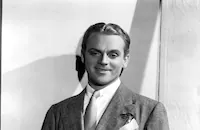
James Cagney

George Raft

Jane Bryan

George Bancroft
Maxie Rosenbloom

Stanley Ridges

Alan Baxter

Victor Jory

John Wray
Edward Pawley
Willard Robertson
Emma Dunn
Paul Hurst

Louis Jean Heydt
Joe Downing
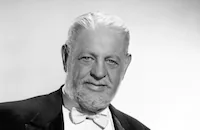
Thurston Hall

William Davidson

Clay Clement
Charles Trowbridge

Harry Cording

John Ridgely
John Harron
Selmer Jackson
Robert Homans
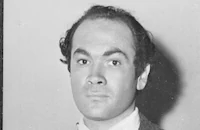
Abner Biberman
Napoleon Simpson
Cliff Saum

Tom Wilson
Al Lloyd
Jack Goodrich
Stuart Holmes
Alice Connors
Fern Barry

Maris Wrixon
Garland Smith
Arthur Gardner
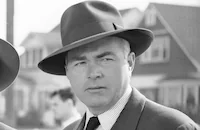
James Flavin
Eddy Chandler
Jack C. Smith
Fred Graham
Henry Otho

Lee Phelps
Dick Rich

Walter Miller

Wilfred Lucas
Vera Lewis
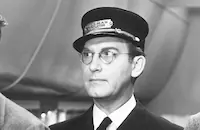
Emmett Vogan
Earl Dwire
Frank Mayo
Mack Gray
Bob Perry
Al Hill
Joe Sully
Crew
E. A. Brown
William Buckley
Warren Duff
Arthur Edeson
Leo F. Forbstein
Hugo Friedhofer
Frank Heath
David Lewis
Max Parker
Norman Reilly Raine
Thomas Richards
Howard Shoup
Max Steiner
Jack L. Warner

Photo Collections
Videos
Movie Clip





Trailer
Film Details
Technical Specs

Articles
Each Dawn I Die
Cagney plays Frank Ross, a cocky reporter whose efficiency at rooting out local graft and laying it bare has not gone unnoticed by corrupt local D.A. Jesse Hanley (Thurston Hall). As a result, Frank finds himself accosted after a late night at the office by Hanley's goons, who slug him, douse him with liquor, and set him behind the wheel of a runaway car. The plan to disgrace the journalist proves a little too effective, as three people are killed in the resulting collision. Frank's pleas of innocence are fruitless, and he's sentenced to hard time. He adjusts to life behind bars by keeping a tough front, hoping his colleagues' efforts to exonerate him pan out, and staying out of trouble until his parole hearing.
Ross quickly butts heads with the hardened street tough, Stacey (George Raft), who comes to appreciate the kid's style after he foils an assassination attempt by the craven Limpy Julien (Joe Downing). Soon afterward, Julien is knifed during the weekly movie; Stacey, as part of an audacious escape bid, sells Ross on the idea of fingering him for the murder, in exchange for help in clearing Frank's name. Removed from prison to face a hearing on the charges, Stacey dives from the courthouse window onto a canvas-roofed truck waiting in the street. Suspected of complicity, Frank is returned to face even greater wrath from the penal authorities.
Certain Frank was responsible for the excessive press presence at the hearing, Stacey fully intends to let him rot, until Ross's colleague/girlfriend (Jane Bryan) implores him to do the right thing and help the nearly-broken journalist. Stacey works the street, and ultimately discovers that Kassock (John Wray), the gunsel who engineered Frank's frame-up, is now doing time within the same prison. Stacey goes on to engineer an equally outrageous scheme for winning Ross's freedom, which takes the film to a bullet-ridden conclusion.
In his direction, Warner house pro William Keighley kept the story's momentum at a riveting pace. The familiar faces in the supporting cast turn in nice work, such as George Bancroft as the no-nonsense warden eventually sold on Ross's sincerity and Victor Jory as the parole board puppet charged with making sure he never gets out. The players making up the colorful community of cons, including Maxie Rosenbloom, Alan Baxter and Louis Jean Heydt, also acquit themselves well.
Each Dawn I Die was Raft's first film assignment after signing with Warners and joining their legendary stable of tough guys. Raft had known Cagney since they were hoofers in vaudeville, and Cagney had wrangled a small part for him in his early vehicle Taxi! (1932). Raft is effective here in a role a shade more sympathetic than most in his long screen portfolio of dapper thugs; Cagney always bore him great respect for both his footwork and his character. "He was the only really tough man I knew in the business," Cagney would relate to biographer Doug Warren. "He was genuinely tough without meaning to be."
Much is on record of the rough crowds that Raft ran with off screen, and his reputation therein might have preserved Each Dawn I Die as we know it today. Lewis Yablonski's 1974 biography George Raft recounted a post-production encounter between the actor and Willie Bioff, a union racketeer who had been extorting payoffs from studio heads in order to ensure the prevention of on-set "accidents." Bioff claimed that Raft ought to thank him for the picture's success: "The studio wasn't going to pay off and we were planning to take care of Cagney...We were all set to drop a lamp on him. But I got word to lay off because you were in the picture." Years later, Raft would work with the studios and the courts to clean up corruption in the industry unions.
Producer: Hal B. Wallis, Jack L. Warner, David Lewis
Director: William Keighley
Screenplay: Warren B. Duff, Norman Reilly Raine, Charles Perry, Jerome Odlum (book)
Cinematography: Arthur Edeson
Film Editing: Thomas Richards
Art Direction: Max Parker
Music: Max Steiner
Cast: James Cagney (Frank Ross), George Raft (Hood Stacey), Jane Bryan (Joyce Conover), George Bancroft (Warden John Armstrong), Victor Jory (W.J. Grayce), Maxie Rosenbloom (Fargo Red).
BW-92m. Closed captioning.
by Jay S. Steinberg

Each Dawn I Die
Quotes
Trivia
Notes
According to a news items in Hollywood Reporter, Michael Curtiz was originally assigned to direct the film and John Garfield was to have played "Hood" Stacey. This was George Raft's first picture for Warner Bros. after many years under contract to Paramount. Although the Variety review credits Charles Perry with screenplay, he is not credited onscreen or in Screen Achievements Bulletin.















